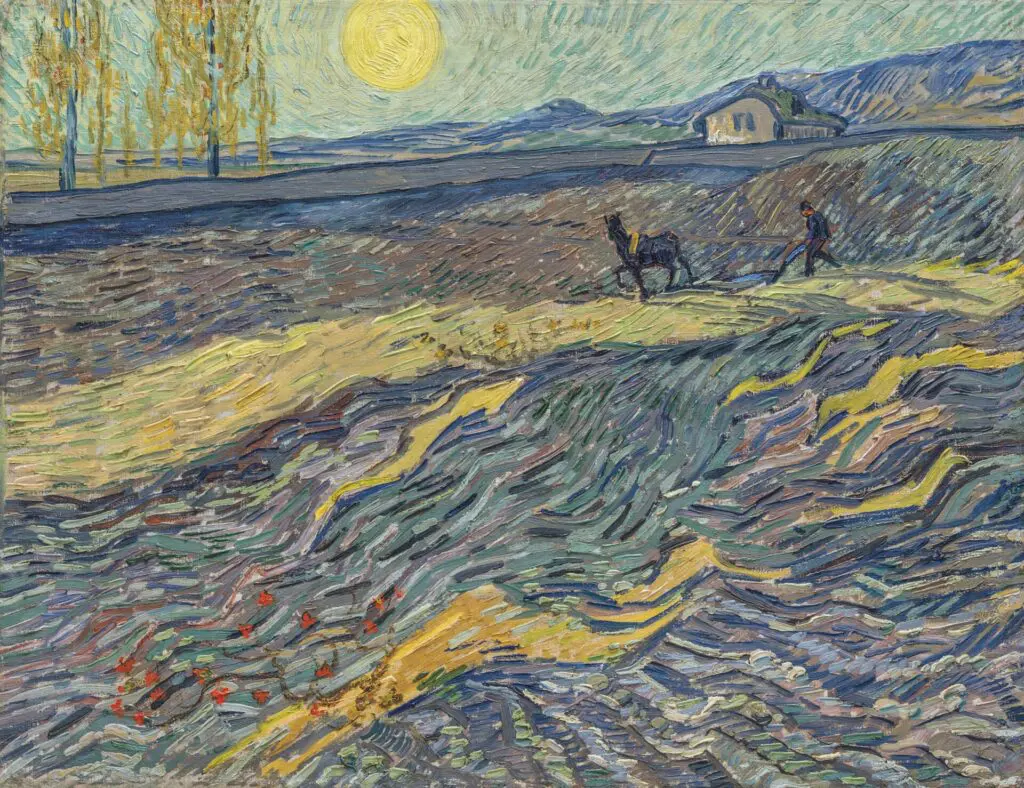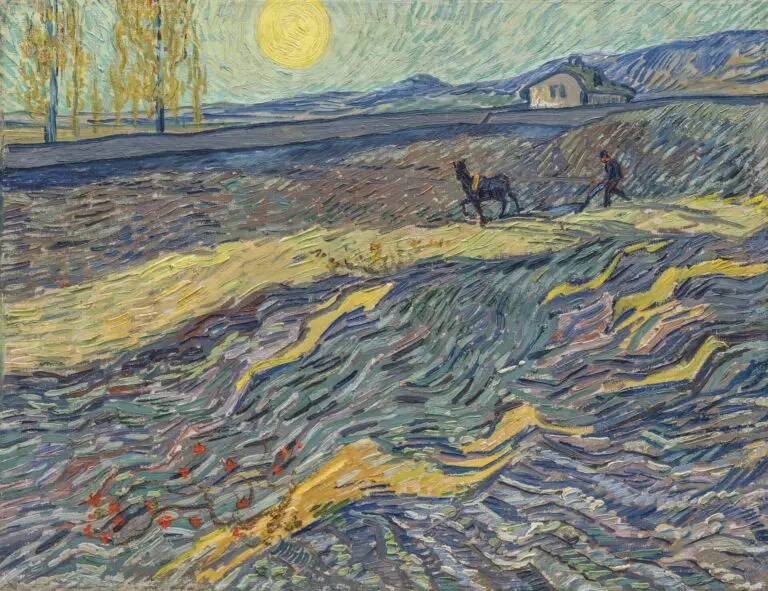Labourer In A Field
Vincent van Gogh’s Labourer in a Field (1889) captures a ploughman working in a tranquil wheat field, inspired by the landscape Van Gogh observed from the Saint-Paul-de-Mausole asylum in Saint-Rémy-de-Provence. Painted with thick brushstrokes and vibrant yellows, it symbolizes life’s cycles and mortality, reflecting Van Gogh’s emotional state during recovery. The scene includes a stone wall, poplar trees, and an old farmhouse bathed in early morning light. Part of a series exploring rural labor themes, it highlights Van Gogh’s deep connection to the land. The artwork gained global recognition, selling for $81.3 million at Christie’s in 2017.
1889
About the Artwork
During the period from May 1889 to May 1890, Van Gogh often gazed out of his window at this very landscape, which inspired many of his works. He believed that engaging with his art was essential for his recovery from mental health struggles. The repetitive nature of this theme in his paintings reflects both his connection to the land and his emotional state at that time.Van Gogh's use of color and texture is notable; he employed thick brushstrokes and vibrant yellows to convey the warmth of the sun and the vitality of the wheat. He viewed wheat as a symbol of life's cycles and transience, often linking it to themes of labor and mortality. In letters to his brother Theo, he expressed how he saw the figure of the reaper as an embodiment of death but portrayed it in a way that was not mournful.
Significance and Value
Laboureur in a field gained significant attention when it was auctioned at Christie's in November 2017, where it sold for $81.3 million, far surpassing its estimated value of $50 million. This sale underscored Van Gogh's enduring legacy and the high demand for his works in the art market.The painting is part of a broader series where Van Gogh explored similar motifs, including various depictions of laborers in fields throughout different times of day and seasons. This thematic exploration highlights not only his artistic evolution but also his deep appreciation for rural life and its rhythms.Did You Know
Unlike many of Van Gogh’s other works that explore the dynamic skies of dusk or stormy weather, Labourer in a Field uniquely captures the soft, golden light of early morning, emphasizing a tranquil yet industrious start to the day.
Van Gogh’s love for Japanese prints influenced the composition and textures of Labourer in a Field. The flat perspective and strong outlines are reminiscent of the Ukiyo-e style, which he deeply admired.
Van Gogh saw the figure of the ploughman as a metaphor for perseverance and human connection to the earth. This idea aligns with his admiration for rural workers, whom he believed embodied an honest, noble existence.










